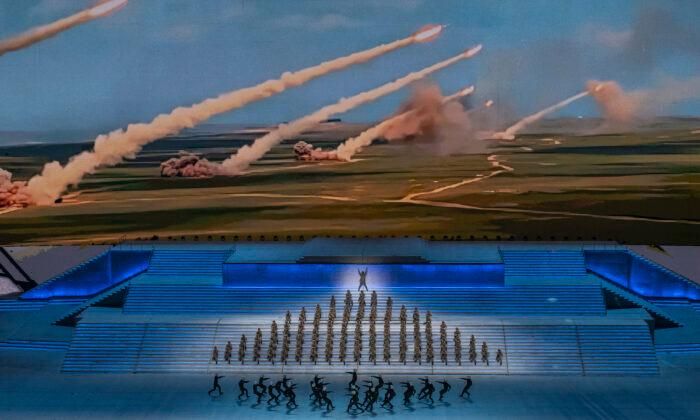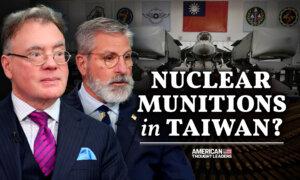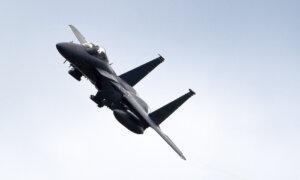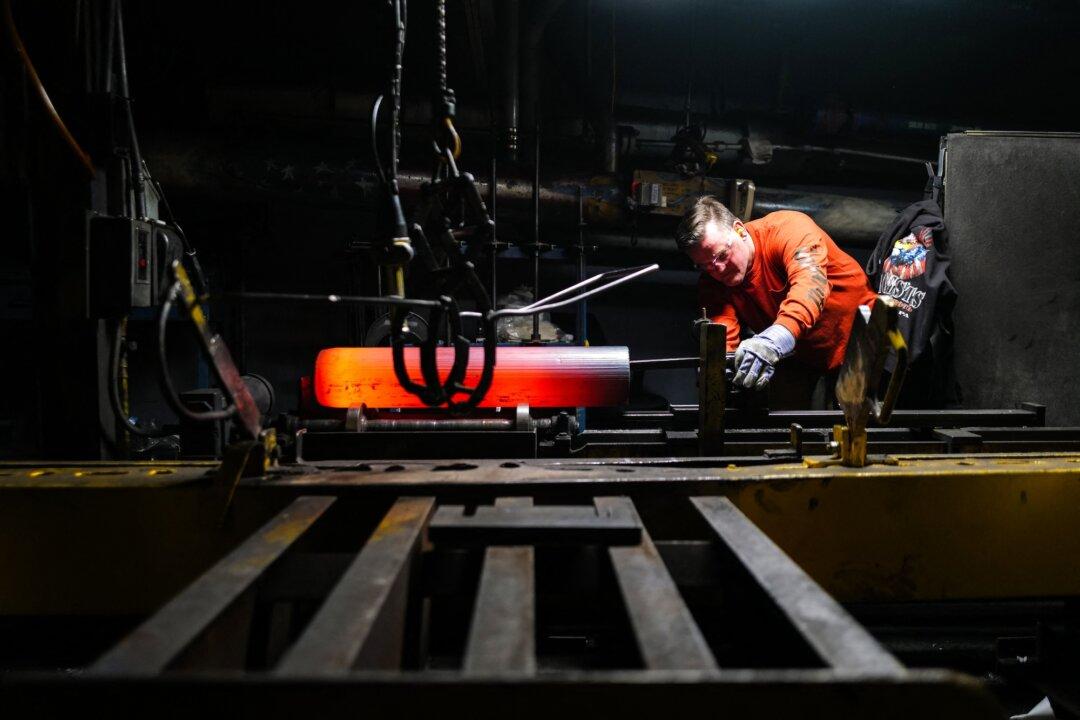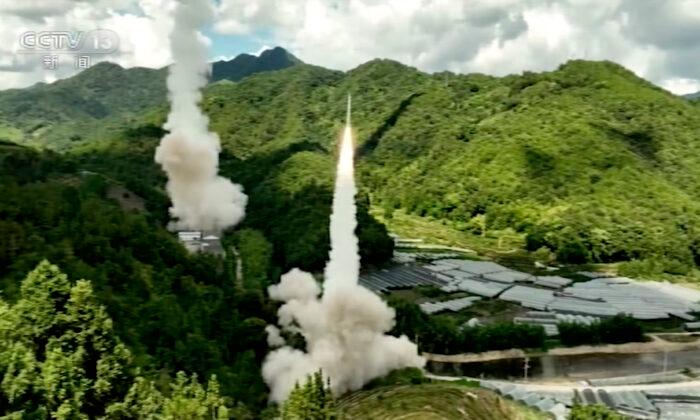In some of the most important congressional testimony by a U.S. military official, it has been revealed that China’s People’s Liberation Army (PLA)—not the U.S. military—very likely has nuclear superiority in Asia.
This creates a profound vulnerability for the United States and its Asian allies.
Washington may not be able to deter theater-level nuclear coercion that may, in turn, tempt China, Russia, and/or North Korea to decide they can initiate military action against Taiwan, Japan, South Korea, and Pacific-deployed U.S. military forces.
As part of his Feb. 29 testimony before the Senate Armed Services Committee on nuclear threats to the United States and the status of U.S. strategic forces, U.S. Strategic Command Commander Gen. Anthony Cotton stated, “The PRC [People’s Republic of China] has approximately 1,000 medium and intermediate-range dual-capable conventional or nuclear ballistic missiles capable of inflicting significant damage to U.S., Allied, or partner forces and homelands in the Indo-Pacific.”
Gen. Cotton’s statement is perhaps the first time a U.S. military official stated an estimate of the potential size of the PLA’s theater nuclear missile forces.
Medium-range (1,200 miles) ballistic missiles (MRBMs) and intermediate-range (3,000 miles) ballistic missiles (IRBMs) are theater-range weapons.
While Gen. Cotton did not provide a specific number of nuclear-armed theater ballistic missiles in his open testimony, the implication is that the PLA could have up to 1,000 warheads for its 1,000 theater ballistic missiles, or at least some number, perhaps into the multiple hundreds.
Interestingly, since its 1999 inception, no previous edition of the Pentagon’s annual “China Military Power Report” (CMPR), a consensus product of the U.S. Intelligence Community, has provided an estimate for PLA theater nuclear weapons.
However, on page 186 of the latest 2023 CMPR, the report states that the PLA has 2,800 IRBMs, MRBMs, short-range ballistic missiles (SRBMs), and ground-launched cruise missiles (GLCMs).
The 2023 CMPR does not provide numbers for PLA Air Force (PLAAF) air-launched land attack cruise missiles (LACMs).
The PLAAF has about 150 Xian H-6K/J/N bombers that can each carry six CJ-20 LACMs, which amounts to a potential 900 LACMs per sortie of the total H-6 force.
It could be as many as 2,700 LACMs if one assumes three total H-6 attack sorties: The CJ-20 has been in production since about 2005, so the PLAAF may have more than 2,700 LACMs.
But what this also means is that 2,800 ground-launched and 2,700 air-launched missiles could add up to a potential 5,500 theater ballistic and cruise missiles that could also be nuclear-armed.
If it had its way, the Chinese Communist Party’s (CCP’s) military would have us believe that it has no tactical or theater nuclear weapons—at least, this has been one message that “barbarian handlers” or Chinese experts designated to meet with visiting U.S. and foreign experts have tried to convey.
This is consistent with longstanding historic CCP stresses on exercising deception and stratagems in statecraft and warfare.
For example, citing written Chinese sources and interviews in Beijing in the fall 2019 issue of the journal International Security in an article titled “Dangerous Confidence? Chinese Views on Nuclear Escalation,” University of Pennsylvania professor Fiona Cunningham and Massachusetts Institute of Technology professor M. Taylor Fravel concluded: “China never deployed tactical nuclear weapons either to counter a Soviet invasion of China in the 1980s or, to date, to threaten limited nuclear strikes in a maritime and air war against the United States.”
Having just been described by announcers in a large PLA 2015 military parade as both conventional- and nuclear-warhead capable, the authors did note that the 2,500-mile range DF-26 IRBM could be used as a tactical nuclear weapon.
But few have noted the 2016 observations of former Vice Chief of Staff of the Russian Strategic Missile Forces Col. Gen. Victor Esin, who began his career as acting chief engineer of a Soviet SS-4 nuclear missile during the Cuban Missile Crisis and then spent decades watching China’s nuclear missile developments.
While Mr. Esin retired in 1997, he has been a popular contributor to conferences on the Cuban Missile Crisis and one of the most outspoken Russian commentators on China’s nuclear forces.
In an Oct. 26, 2016 article in the Russian publication Sputnik, Mr. Esin considers the PLA’s then-large force of DF-11 and DF-15 short-to-medium range ballistic missiles (SRBMs), introduced in the mid-1990s and the newer medium-range DF-16.
Mr. Esin observed: “All of them have two variants in terms of armament—conventional and nuclear. According to available information, about 10-15% of DF-11s, and 20-25% of DF-15s, are equipped with nuclear warheads.”
Mr. Esin’s observation implies that most PLA theater-range missiles and cruise missiles could be dual-capable or capable of being armed with nuclear warheads, including the DF-11, DF-15, DF-16, DF-17, DF-21, DF-26, and CJ-10 ground-launched, and CJ-20 air-launched LACMs.
Interestingly, if you take the average of Mr. Esin’s ranges of percentages for the DF-11 and DF-15, 17.5 percent, and apply that to the potential 5,500 theater missiles, you get 962 potential nuclear-armed theater missiles.
This number is important because today, the United States has no tactical nuclear bombs or nuclear-armed SRBMs, MRBMs, IRBMs, or LACMs deployed in Asia.
In 2022, the Biden administration reversed the Trump administration’s 2018 decision to resume production of the nuclear-armed sea-launched cruise missile (SLCM-N), which would have given U.S. submarines an immediate tactical nuclear weapon to deter China, Russia, and North Korea.
Due to decisions made during the Trump administration, the U.S. Navy does deploy a handful of W76-2 low-yield tactical nuclear warheads on Trident strategic ballistic missiles aboard Ohio class strategic nuclear submarines (SSBNs).
Additionally, in mid-2023, the Biden administration began using visible deployments of Ohio class SSBNs to Asian allies, such as South Korea, to demonstrate a U.S. nuclear deterrent in Asia.
However, using strategic missiles for tactical/theater missions risks giving China, Russia, and North Korea an excuse to escalate to a strategic nuclear exchange. Moreover, U.S. strategic missiles should be deterring growing Russian and Chinese strategic nuclear forces.
American allies would be far more reassured by the deployment of U.S. tactical nuclear weapons to Asia.
But the United States has only a few tactical nuclear bombs, and they rely on tactical strike aircraft for delivery, which the Russia-Ukraine war has proven are quite vulnerable to modern, sophisticated integrated air defenses.
Instead of spending $138 billion to bail out some U.S. student loans, it would be far smarter to spend that money on new U.S. theater nuclear weapons, which could deter the wars that could require many of those same young Americans to be drafted.
